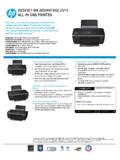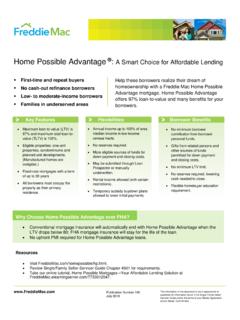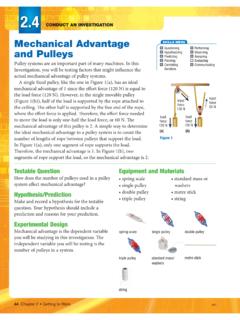Transcription of HighScope’s Child Observation Record — COR …
1 highscope s Child Observation Record COR advantage Aligned With highscope s Key Developmental Indicators (KDIs) The following chart shows how items from highscope s Child Observation Record COR advantage correspond to items from highscope s infant-toddler key developmental indicators (KDIs) (2011) and highscope s preschool key developmental indicators (KDIs) (2012). COR advantage is an Observation -based assessment instrument for children from birth through kindergarten. It is designed to measure children s progress in all early childhood programs (including, but not limited to those using the highscope educational approach). It is divided into 8 major categories that are critical for school success: Approaches to Learning (Items A C); Social and Emotional Development (Items D H); Physical Development and Health (Items I K); Language, Literacy, and Communication (Items L R); Mathematics (Items S W); Creative Arts (Items X AA); Science and Technology (Items BB EE); and Social Studies (Items FF HH).
2 There is also a category for English Language Learning, if appropriate for the Child , (Items II JJ). Each category contains between 3 and 7 items, and each item has 8 developmental levels, ranging from 0 (the simplest) to 7 (the most complex). Teaching staff collect anecdotes for completing the COR during the normal daily routine, so the assessment process is seamlessly integrated with early childhood teaching and planning. The results provide detailed reports that analyze progress and are designed for various audiences, from families to government monitors. The educational content of highscope programs for infants and toddlers is built around 42 key developmental indicators (KDIs). The KDIs are developmental milestones that guide teachers and caregivers as they plan learning experiences and interact with infants and toddlers to support learning.
3 Each KDI is a statement that identifies an observable Child behavior reflecting knowledge and skills in the areas of approaches to learning; social and emotional development; physical development and health; communication, language, and literacy; cognitive development; and creative arts. The educational content of highscope preschool programs is built around 58 key developmental indicators (KDIs). The KDIs are early childhood milestones that guide teachers as they plan and assess learning experiences and interact with children to support learning. Each KDI is a statement that identifies an observable Child behavior reflecting knowledge and skills in the areas of approaches to learning; social and emotional development; physical development and health; language, literacy, and communication; mathematics; creative arts; science and technology; and social studies.
4 COR advantage Items Infant-Toddler KDIs Preschool KDIs I. Approaches to Learning A. Initiative and planning 1. Initiative: Children express initiative. 1. Initiative: Children demonstrate initiative as they explore their world. 2. Planning: Children make plans and follow through on their intentions. 8. Sense of competence: Children feel they are competent. B. Problem solving with materials 2. Problem solving: Children solve problems encountered in exploration and play. 3. Engagement: Children focus on activities that interest them. 4. Problem solving: Children solve problems encountered in play. 5. Use of resources: Children gather information and formulate ideas about their world.
5 C. Reflection 6. Reflection: Children reflect on their experiences. COR advantage Items Infant-Toddler KDIs Preschool KDIs II. Social and Emotional Development D. Emotions 8. Emotions: Children express emotions. 9. Emotions: Children recognize, label, and regulate their feelings. E. Building relationships with adults 5. Attachment: Children form an attachment to a primary caregiver. 6. Relationships with adults: Children build relationships with other adults. 12. Building relationships: Children build relationships with other children and adults. F. Building relationships with other children 7. Relationships with peers: Children build relationships with peers.
6 10. Playing with others: Children play with others. 12. Building relationships: Children build relationships with other children and adults. 13. Cooperative play: Children engage in cooperative play. G. Community 11. Group participation: Children participate in group routines. 11. Community: Children participate in the community of the classroom. 14. Moral development: Children develop an internal sense of right and wrong. 55. Decision making: Children participate in making classroom decisions. 58. Ecology: Children understand the importance of taking care of their environment. H. Conflict resolution 9. Empathy: Children show empathy toward the feelings and needs of others.
7 10. Empathy: Children demonstrate empathy toward others. 15. Conflict resolution: Children resolve social conflicts. COR advantage Items Infant-Toddler KDIs Preschool KDIs III. Physical Development and Health I. Gross-motor skills 13. Moving the whole body: Children move the whole body (rolling, crawling, cruising, walking, running, balancing). 14. Moving with objects: Children move with objects. 16. Gross-motor skills: Children demonstrate strength, flexibility, balance, and timing in using their large muscles. 18. Body awareness: Children know about their bodies and how to navigate them in space. J. Fine-motor skills 12. Moving parts of the body: Children move parts of the body (turning head, grasping, kicking).
8 17. Fine-motor skills: Children demonstrate dexterity and hand-eye coordination in using their small muscles. K. Personal care and healthy behavior 3. Self-help: Children do things for themselves. 19. Personal care: Children carry out personal care routines on their own. 20. Healthy behavior: Children engage in healthy practices. COR advantage Items Infant-Toddler KDIs Preschool KDIs IV. Language, Literacy, and Communication L. Speaking 17. Nonverbal communication: Children communicate nonverbally. 18. Two-way communication: Children participate in two-way communication. 19. Speaking: Children speak. 22. Speaking: Children express themselves using language. 23. Vocabulary: Children understand and use a variety of words and phrases.
9 M. Listening and comprehension 16. Listening and responding: Children listen and respond. 21. Comprehension: Children understand language. 23. Vocabulary: Children understand and use a variety of words and phrases. N. Phonological awareness 21. Enjoying language: Children enjoy stories, rhymes, and songs. 24. Phonological awareness: Children identify distinct sounds in spoken language. O. Alphabet knowledge 25. Alphabetic knowledge: Children identify letter names and their sounds. P. Reading 20. Exploring print: Children explore picture books and magazines. 26. Reading: Children read for pleasure and information. 27. Concepts about print: Children demonstrate knowledge about environmental print.
10 Q. Book enjoyment and knowledge 20. Exploring print: Children explore picture books and magazines. 28. Book knowledge: Children demonstrate knowledge about books. R. Writing 29. Writing: Children write for many different purposes. COR advantage Items Infant-Toddler KDIs Preschool KDIs V. Mathematics S. Number and counting 25. Exploring more: Children experience more. 26. One-to-one correspondence: Children experience one-to-one correspondence. 27. Number: Children experience the number of things. 31. Number words and symbols: Children recognize and use number words and symbols. 32. Counting: Children count things. 33. Part-whole relationships: Children combine and separate quantities of objects.





